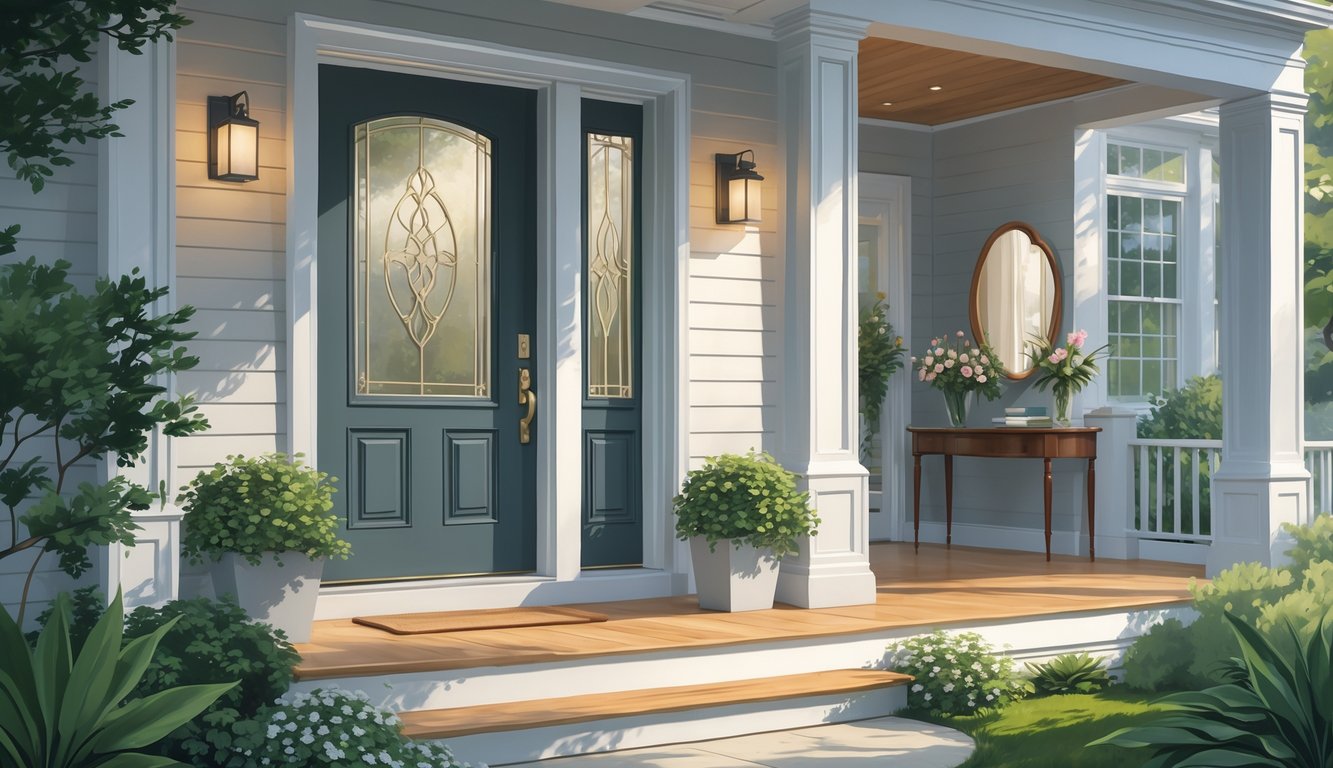
Creating Joy and Happiness Through Entryway Design
People keep asking, “Is it always this tidy?” when they walk into my front hall. Spoiler: absolutely not. But those first three seconds in the space? They change my mood, guests’ moods, everyone’s. Sometimes a basket tips over or the rug bunches up; nothing’s magazine-worthy, but somehow it still works.
Design Decisions That Spark Joy
I never thought a beat-up shoe bench could shift my mood, but here I am. Swapped out a junky bin for a cheap console table, stuck a Philodendron on it, threw up one of those “smile, you’re home” signs—different vibe instantly. Some designer said even a single cheerful art print (just something weird or bright) can trigger a good mood for homeowners and visitors.
Distractions pile up—mail, umbrellas, whatever—so I try to toss “junk” daily. Sometimes a clearance rug or a painted door (supposedly pale blue is “peaceful,” but who decides this stuff?) gives me a weird sense of accomplishment. Real flowers—actual, not plastic—make the whole entryway feel better, even if the rest of the day’s a mess. Maybe I’ll paint my door orange next. Apparently that’s good for your mood, but nobody agrees on which orange.
Frequently Asked Questions
Can’t escape the little stuff—crooked hardware, a lopsided rug, mystery laundry smells—but the front threshold has more power than anyone warns you about. I got lost in paint chips and door handles and a pointless debate about artificial plants before realizing: curb appeal and value hinge on details no one tells you to notice.
How does the design of my entryway affect the first impressions of potential homebuyers?
Bare bulbs and piles of coats—nobody talks about them until a realtor stands there and says, “Buyers decide in ten seconds.” RealCraft’s psychology breakdown claims door style alone tells people all they need to know about you, faster than your $2,000 sofa.
Once someone spots chipped paint or a dated door, it’s like the whole house gets dinged in their head—even if you just wanted to hide the recycling. My friend Amanda flips houses and swears her best offers come after she splurges on a new front door, not after a kitchen remodel. I don’t get it either.
What are some cost-effective updates I can make to my entryway to boost my home’s appeal?
I forgot to swap out a tired doormat and sticky lock before my first open house—people noticed. Second time around, $40 on a new handle and suddenly buyers cared more about that than the free muffins. Supposedly, simple door replacements give you a 75% ROI, but no one brags about spending under $300 on paint, light fixtures, and a wall hook. And don’t get me started on old tape residue from last year’s wreath.
Swapping light covers or taping down a rogue rug corner: way faster than repainting the living room. Somehow, appraisers notice this stuff more than anyone expects (or so Stacy, my local “numbers” realtor, keeps saying).
Can the lighting choices in my foyer influence the perceived value of my home?
It’s not just realtors obsessed with daylight through a sidelight panel—the NYT’s article claims a decent sconce or dimmable overhead makes the space “feel” richer, even if you’re using the cheapest bulbs from the grocery store. Mood lighting makes buyers hang around; harsh LEDs? They bail. Fast.
Confession: my foyer lamp still has a busted pull chain. Guests either laugh or look horrified—depends on the person—but at least the shadows hide the dust.
Does the flooring material in my entrance make a difference in home valuation?
Is anyone really tracking footprints on engineered hardwood vs. slate? Appraisers supposedly clock any entry floor that looks cheap or trashed. Carpet? Never wins, especially if you’ve ever tried to steam-clean road salt out of a white runner.
I swapped old laminate for tile (my cousin did too, after her dog destroyed the vinyl, again), and both times: higher list price, fewer “we’ll think about it” emails. No buyer has ever said, “Wow, sticky linoleum!” but somehow listings never mention it either.
In what ways can I optimize the space in my entryway to increase functionality and attraction?
Tiny entryways—mine’s barely wide enough for the door to open without hitting a shoe rack—make every backpack a tripping hazard. But slim shelves, wall hooks, baskets for keys? Total game-changer. When storage hacks aren’t obvious, buyers lose interest, even if the backyard’s huge. My old agent insisted on this after one showing where people literally got stuck in the doorway.
Shoving clutter under a bench or using double-duty furniture—Sam swears by a console with deep drawers—can make a cramped space feel bigger. I ditched the standing coat rack for wall hooks and, weirdly, even my in-laws stopped commenting. Progress? Maybe.
What entryway colors are known to enhance a home’s resale value?
Okay, look, I’ve gone down the paint-color rabbit hole way too many times. Off-white, pale gray, deep navy—yeah, those still win. Forget fire-engine red or, I don’t know, millennial pink. I checked the 2025 entryway trends and, honestly, I’ve lost hours to those paint-brand “inspiration” blogs. Apparently, neutral tones make the foyer look fresher or bigger or whatever, and buyers start picturing themselves living there. I guess even gross baseboards just fade into the background if the wall color isn’t screaming for attention.
My cousin (first-time buyer, bless her heart) painted her tiny entryway sage green last spring. Literally nobody cared except her dog—who, for some reason, decided to gnaw on the trim. Meanwhile, my neighbor slapped some “greige” on her walls and suddenly had six offers in, like, a week. Has anyone ever asked me which neon green works best for resale? Nope. That’s probably all the research I need.